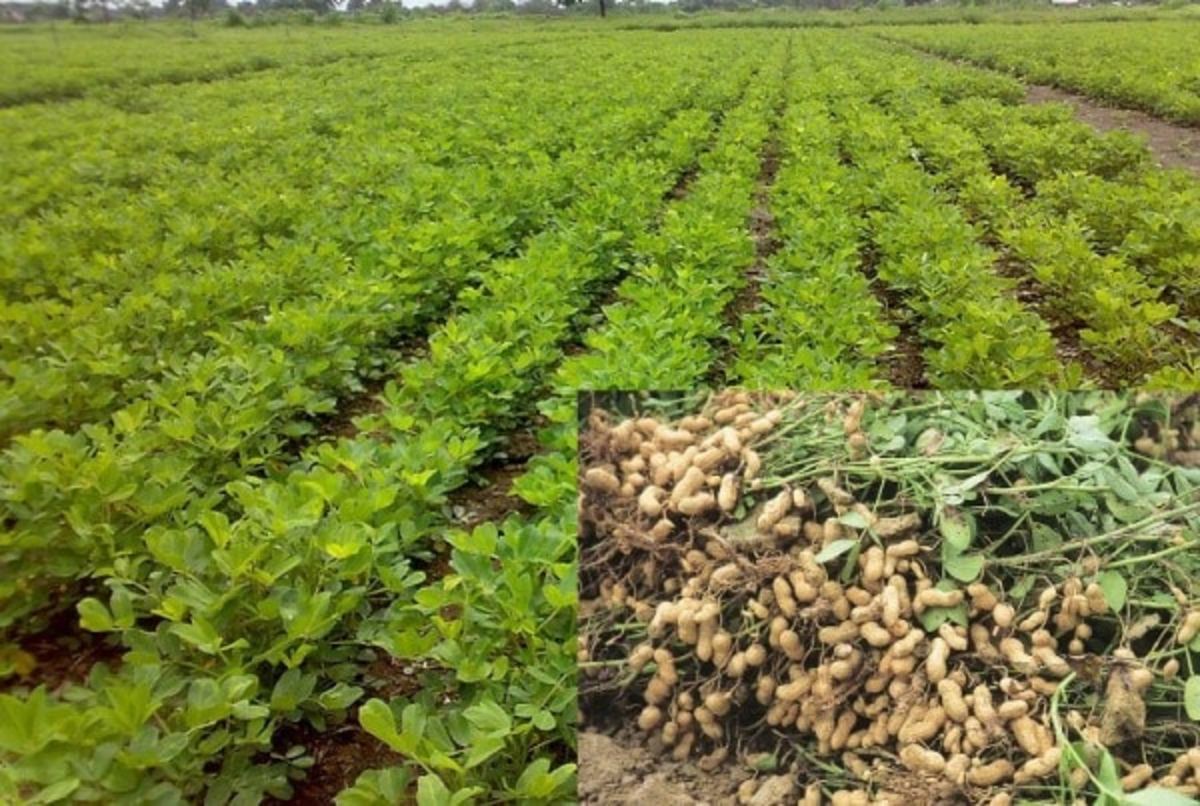Groundnuts Cultivation Farming

Groundnuts Cultivation Farming
In agribusiness, we can not talk about profitable crops without talking about groundnuts crop. Groundnut is known to be one of the popular food throughout the globe.
It is consumed either as a peanut butter or crushed and used in the groundnut oil in different countries. Groundnut is also consumed as a confectionary snack roasted, salted or in sweets by many individuals. In other parts of the globe, some people are able to boil it unshelled or shelled and consume it in either of the two states. Groundnuts are categorized into the three types, depending on the time taken to mature.
These categories are early, medium and late maturing. This article will give in detail on how to grow and manage your groundnut field for increased yields.
The majority of smallholder farmers are in Groundnut farming business because it does not require more input, making it appropriate for cultivation in low input agriculture.
Optimal Climatic and Soil Requirements
Groundnuts gives a better result in the tropical and subtropical regions of the world, and requires sandy soil for optimal results.
Climatic conditions
Groundnuts gives high yield on a temperature range of 27 to 30 °C. This optimum temperature is known to cause rapid vegetative growth. For the groundnuts to be able to reproduce, it needs a temperature range of 24 to 27 °C (for the reproductive growth). Groundnuts reaches its productive phase faster in warm weather areas.
Rainfall
Groundnuts productions require an optimal well distributed rainfall of a range of 450 mm and 1250 mm. Early maturing, small Groundnut seeds require annual rainfall of a range of 300 to 500 mm. For the medium to late maturing large seeded Groundnut varieties, it requires a rainfall of a range of 1000 to 1200 mm and it has to be well distributed.
Soil requirements
Groundnuts requires deep, well-drained soils for optimal performance. Make sure you grow your Groundnuts on sands and sandy loams. Avoid growing on the acidic soils. The optimum soil pH for growing Groundnuts is 5,3 to 6,8.
Avoid growing Groundnuts on the same land repeatedly. Make sure you rotate and Groundnuts is known to be leguminous plants, as it adds nitrogen into the soil, so make sure you grow Groundnuts followed by cereal crops.
Cultivation Practices
Site preparation
Make sure you till or plough your yield to be ready for planting your Groundnuts. You can till and make field ridges by using a hoe or a tractor. Make sure the site is thoroughly prepared in preparation for planting.
Moisture requirements
Make sure the soil has right moisture content when growing Groundnuts and make sure you avoid too much moisture content during the harvesting period as this can reduce the quality of groundnuts if Groundnuts crop is left to dry in the field.
Crop establishment
Make sure you plant your Groundnuts as early as possible. When possible, plant your Groundnut seeds at the beginning of rainy season in your area.
During planting, make sure you observe a spacing of 35 to 45 cm between rows and 5 to 10 cm between seeds in the row. Make sure you plant 100 kg of Groundnut seeds per hectare. Each seed should be planted to a depth of 5 cm.
It is recommended to have a plant population of 150 000 plants per hectare for dryland production. If you want to grow your Groundnuts under irrigation, make sure you have a plants population of 300 000 per hectare.
Growth requirements and nutrition
Groundnuts require a good amount of potassium for optimal growth and development. So make sure your soil has enough potassium content. You can apply 10 kg/ha of potassium for you to get better yields. Groundnuts also requires Calcium for seed development. You can apply 200 kg of Calcium per hectare.
It is recommended to apply Super Phosphate as basal fertilizers. Groundnuts also respond well to manure, because manures help to ameliorate soil acidity on top of supplying nutrients to the soils.
Mid-season Management
Make sure your Groundnut field is kept free from weeds, as this may be a source of diseases and pests, on top of competing for soil nutritions.
You can control the weeds physically, by pulling out the weed by hands or by using a hoe in weeding. You can also control the weed by using herbicides, but make sure you follow the given instructions.
When to harvest
Make sure you harvest your Groundnuts after 115 days or less if you have planted early maturing seed variety. For late maturing seed varieties, it takes about 160 days to mature.
Harvesting
To harvest your mature Groundnuts, you dig and uplift and loose it, curing and picking, the Groundnuts and this can be done manually. Make sure you sun dry your Groundnuts before storage.
Comments
Post a Comment